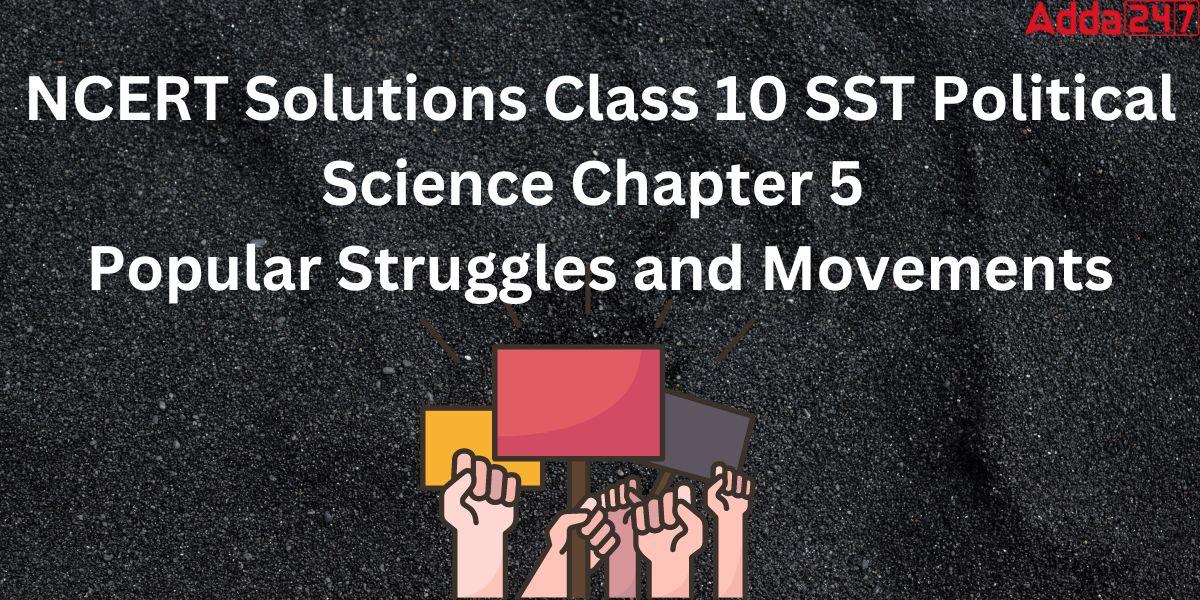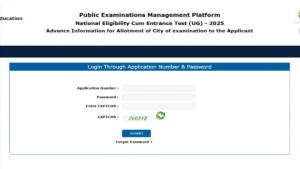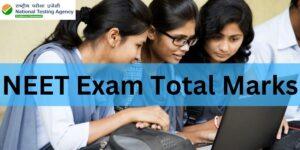Table of Contents
NCERT Solutions Class 10 SST Political Science Chapter 5 Popular Struggles and Movements Notes
NCERT Solutions Class 10 SST Political Science Chapter 5 Popular Struggles and Movements Notes are given in this article.NCERT Solutions Class 10 is the best resource for obtaining a good score in the class 10 board Examination. Here are Adda247 Expert faculty team prepared NCERT Solutions Class 10 SST Political Science Chapter 5 Popular Struggles and Movements exercises of that chapter for a better grasp of the topics. These NCERT Solutions answer all questions in an easy and simple manner. These solutions will help you understand the concepts covered in the chapter completely. By writing these answers in the exam students will undoubtedly be able to achieve high scores. Keep learning with Adda247.
Read:NCERT Solutions Political Science Chapter 6 Political Parties
NCERT Solutions Class 10 SST Political Science Chapter 5 Popular Struggles and Movements Pdf
NCERT Solutions Class 10 SST Political Science Chapter 5 Popular Struggles and Movements is given in pdf format so students can easily download it for future use. Click here to download NCERT Solutions Class 10 SST Political Science Chapter 5 Popular Struggles and Movements
NCERT Solutions Class 10 SST Political Science Chapter 5 Popular Struggles and Movements- Topics
Students will learn about pressure groups, their function in Indian society, and popular conflicts there and around the world in Class 10 SST Political Science Chapter 5 Popular Struggles and Movements. The following list contains a summary of the key points covered in NCERT Solutions Class 10 SST Political Science Chapter 5, Popular Struggles and Movements.
- Popular struggles in Nepal and Bolivia
- Movement for democracy in Nepal
- Bolivia’s Water War
- Democracy and popular struggles
- Mobilisation and organisations
- Pressure groups and movements
- Is their influence healthy?
NCERT Solutions Class 10 SST Political Science Chapter 5 Popular Struggles and Movements Questions with Answer
• They run information campaigns in an effort to gain public sympathy and support for their cause.
• They seek to draw the government’s attention to their demands by planning strikes and commotion.• In to influence judgment, they also participate in lobbying.
•Strikes and hunger strikes are two ways that pressure organizations sway public opinion. This peaceful approach had a significant impact on politics. Thus, the government is under pressure to pay attention to their request.
(i)Pressure groups are sometimes formed or led by political party leaders or act as extended arms of political parties.
(ii)The majority of new political party leaders come from interest or movement groups.
(iii) some political parties arose from movements. For example, in Assam, the AGP, and in Tamil Nadu, the DMK and AIADMK.
An organization that fights prejudice is BAMCEF (Backward and Minority Communities Employees Federation). Farmers’ Organization-Bhartiya Kisan Union and All India Trade Union Congress are two other examples.
5. What is the difference between a pressure group and a political party?
Answer. The difference between a pressure group and a political party are
- Pressure groups are organizations that work to sway public policy. On the other hand, Political groups and individuals frequently get together with the goal of forming a government.
- Elections are contested by political groups in order to build governments, not by power groups.
- They each have different interests and ideologies. They each have a different approach to achieving their objectives and represent a range of interests.
6. Organisations that undertake activities to promote the interests of specific social sections such as workers, employees, teachers, and lawyers are called _____________________ groups.
Answer. Organizations that undertake activities to promote the interests of specific social sections such as workers, employees, teachers, and lawyers are called sectional interest groups.
7. Which among the following is the special feature that distinguishes a pressure group from a political party?
- Parties take political stances, while pressure groups do not bother about political issues.
- Pressure groups are confined to a few people, while parties involve a larger number of people.
- Pressure groups do not seek to get into power, while political parties do.
- Pressure groups do not seek to mobilise people, while parties do.
Answer. (c) Pressure groups do not seek to get into power, while political parties do.
8. Match List I (organizations and struggles) with List II and select the correct answer using the codes given below the lists:
| List-I | List-II | |
| 1. | Organizations that seek to promote the interests of a particular section or group | A. Movement |
| 2. | Organizations that seek to promote a common interest | B. Political parties |
| 3. | Struggles launched for the resolution of a social problem with or without groups an organizational structure | C. Sectional interest groups |
| 4. | Organizations that mobilize people with a view to win political power | D. Public interest groups |
| 1 | 2 | 3 | 4 | |
| (a) | C | D | B | A |
| (b) | C | D | A | B |
| (c) | D | C | B | A |
| (d) | B | C | D | A |
Answer.
| 1 | 2 | 3 | 4 | |
| (b) | C | D | A | B |
9. Match List-I with List-II and select the correct answer using the codes given below the lists:
| List-I | List-II | |
| 1. | Pressure group | A. Narmada Bachao Andolan |
| 2. | Long-term movement | B. Asom Gana Parishad |
| 3. | Single issue movement | C. Women’s movement |
| 4. | Political party | D. Fertilizer dealers’ association |
| 1 | 2 | 3 | 4 | |
| (a) | D | C | A | B |
| (b) | B | A | D | C |
| (c) | C | D | B | A |
| (d) | B | D | C | A |
Answer.
| 1 | 2 | 3 | 4 | |
| (a) | D | C | A | B |
- Consider the following statements about pressure groups and parties.
- Pressure groups are the organized expression of the interests and views of specific social sections.
- Pressure groups take positions on political issues.
- All pressure groups are political parties.
Which of the statements given above are correct?
- A, B, and C
- A and B
- B and C
- A and C
Answer. (b) A and B
Read More:
NCERT Solutions for Class 10 SST Political Science Chapter 5 Popular Struggles and Movements-FAQs
Q, What are Pressure groups?
Pressure groups are created when individuals with similar interests and goals band together to work toward a shared goal. The term “pressure groups” refers to groups or organizations that seek to affect government policies and programmes through actions including organizing campaigns, rallies, demonstrations, filing petitions, etc.
Q.How can I access the online PDF of the NCERT Solutions for Class 10 SST Political Science Chapter 4?
Ans. you can download the detailed NCERT Solutions for Class 10 SST Political Science Chapter 4 PDF from the link given in the article.
Q.How does use Adda247’s NCERT Solutions for Class 10 SST Political science Chapter 4 benefit you?
Ans. The advantages of using Adda247’s NCERT Solutions for Class 10 SST Political science are as follows:
- A video explanation is provided to students in addition to the NCERT solution.
- Additionally, a PDF is included, which can be downloaded and saved for later use.



 NEET City Intimation Slip 2025 Out at ne...
NEET City Intimation Slip 2025 Out at ne...
 NEET Passing Marks Out of 720, Check NEE...
NEET Passing Marks Out of 720, Check NEE...
 NEET Total Marks- Check NEET Marks Distr...
NEET Total Marks- Check NEET Marks Distr...










